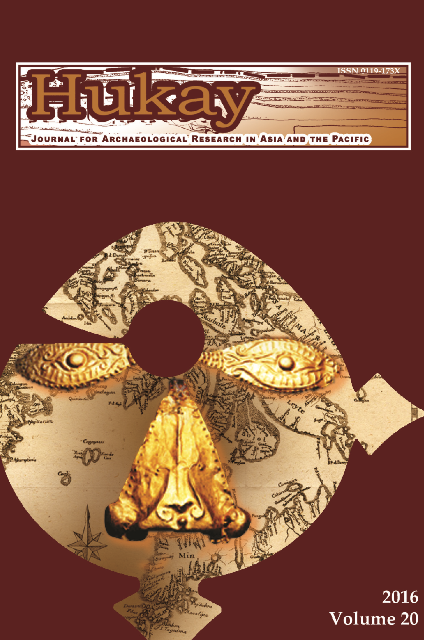Residential Burial Re-use in Coastal Ilocos Sur, Philippines
Abstract
A pervasive practice that we see in house societies is residential burial as a means by which house societies are able to supplant themselves into a landscape. Residential burials are dug directly underneath stilt houses. It is argued in this paper that the very same practice is seen in Sapilang site (CE 1200 to CE 1600, CE 1800- CE 1900), Ilocos Sur, Philippines. Residential burial re-use is a historically established practice among the Tingguians and their ancestors (i.e. Cole 1922; Gironière 1854). Archaeological markers of this practice also appear in Sapilang site (i.e. Lara 2011; E. Lim 2012; Lim and Basilia 2012) and other parts of Ilocos like Galimuyod (Ingel 2015) and Nagsingcaoan (Canilao 2011). Is there a method by which we can independently validate the burial practice? To answer this question the paper will explore how chi square statistical procedure and its corresponding Cramér’s V values can provide quantitative confirmation. Supporting evidence will come in the form of a strong association between arbitrary stratigraphic level and tradeware specimen count, earthenware specimen count, and more importantly fragmented human remains counts in four trenches in the Sapilang archaeological site. The paper will also use correlation statistical analysis to see the nature of the relationship of the three archaeological materials with one another as well as with site stratigraphic levels. The four excavation trenches selected for this paper are Waig 5, Kapasanglayan 1 and Kapasanglayan 2, all of which have a varying presence of human remains in association with cuts indicative of burial re-use; and, Waig 3 which is used as control-- non burial trench.



